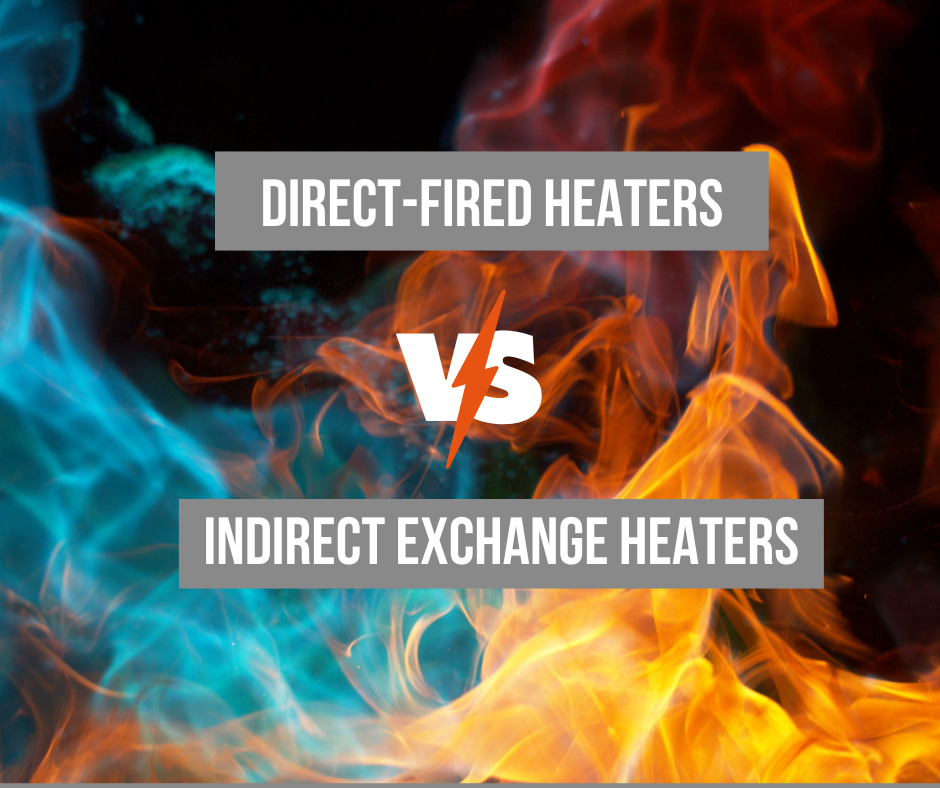In the dynamic realm of livestock and agriculture, where precision is paramount, maintaining optimal environmental conditions becomes a strategic imperative. The choice of a heating system plays a pivotal role in achieving this delicate balance.
Among the myriad options available, two contenders stand out: direct gas-fired air heaters and indirect exchange heating systems. Each presents a distinct set of advantages and considerations.
In this article, we’re going to understand all the nuances differentiating these two heating methods, guiding you toward an informed decision tailored to the unique needs of your agricultural or livestock facility.
Direct Gas-Fired Air Heaters
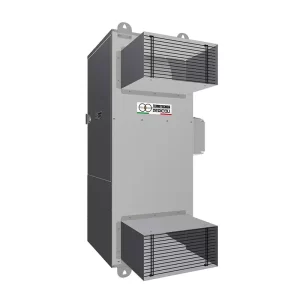
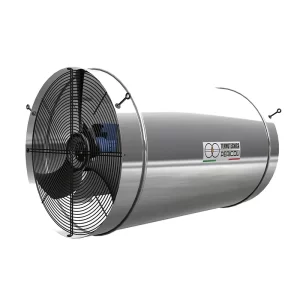 Direct gas-fired air heaters are known for their efficiency and immediate heat delivery. These systems work by burning natural gas, diesel, or propane directly to produce hot air, which is then circulated into the designated space. The absence of a heat exchanger in direct-fired systems ensures minimal heat loss, making them apparently highly efficient.
Direct gas-fired air heaters are known for their efficiency and immediate heat delivery. These systems work by burning natural gas, diesel, or propane directly to produce hot air, which is then circulated into the designated space. The absence of a heat exchanger in direct-fired systems ensures minimal heat loss, making them apparently highly efficient.
Main Advantages of Direct Gas-Fired Air Heaters
- Highly Responsive Heating: Direct-fired heaters provide quick and direct heating, making them ideal for situations where immediate warmth is required.
- Cost-Effective: These systems are often more cost-effective upfront, as they have fewer components compared to indirect exchange systems.
- Energy Efficiency: Direct gas-fired heaters are known for their high energy efficiency, as there is no heat exchanger to absorb and transfer heat. However, this is only an apparent efficiency. The direct flame increases the concentration of CO2, NOx in the air, therefore requiring frequent air changes to maintain a healthy environment. The result is a drastic drop in the global efficiency.
Disadvantages of Direct Gas-Fired Air Heaters
- Air Quality Concerns: Direct-fired heaters release combustion byproducts, such as carbon dioxide and water vapor, directly into the heated air. This can affect air quality and may not be suitable for certain applications.
- Moisture Addition: The combustion process can add moisture to the heated air, which may not be desirable in environments where moisture control is crucial.
- Fire danger: the presence of a naked flame increases the risk of fire within an environment.
Termotecnica Pericoli offers in its heating line two different options related to direct heating: Easyterm and Agriterm.
Our technicians recommend the use of direct heating, especially as an important tool in case of emergency. For example, in the Horti sector, to melt snow on greenhouses that would otherwise collapse from the weight, and/or in applications where it is necessary to artificially increase CO2 to accelerate plant growth.
In livestock, especially in poultry and swine barns, direct-fired heaters are an interesting cost-effective option. As explained before, farmers must take into consideration the air quality levels which will then need to be balanced with greater minimum ventilation resulting in increased operational costs.
Indirect Exchange Heating Systems
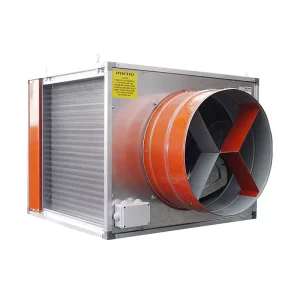
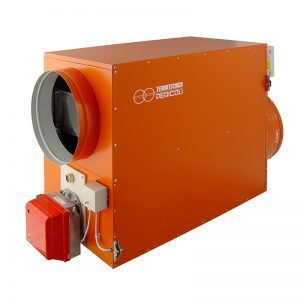 Indirect exchange heating systems, on the other hand, use a heat exchanger to transfer heat from a combustion chamber to the air. In these systems, the combustion byproducts are separated from the air that is circulated into the space, addressing air quality concerns associated with direct-fired heaters.
Indirect exchange heating systems, on the other hand, use a heat exchanger to transfer heat from a combustion chamber to the air. In these systems, the combustion byproducts are separated from the air that is circulated into the space, addressing air quality concerns associated with direct-fired heaters.
Pros of Indirect Heating Systems
- Improved Air Quality: The separation of combustion byproducts ensures that only clean, heated air is released into the environment, contributing to better air quality.
- Moisture Control: Indirect exchange systems allow for better control over humidity levels since the combustion byproducts, including moisture, are kept separate from the heated air.
Cons of Indirect Exchange Heating Systems
- Less Responsive Heating: Compared to direct-fired heaters, indirect exchange systems may have a slower response time as the heat must be transferred through a heat exchanger.
- Higher Initial Costs: The additional components, such as the heat exchanger, can result in higher upfront costs for indirect exchange heating systems.
Discover our top products for heating: Combiterm and F-otb are the best options for indirect heating in large spaces.
Conclusion
When deciding between direct gas-fired air heaters and indirect exchange heating systems for livestock and agriculture, it’s essential to consider factors such as heating speed, air quality, moisture control, and upfront costs.
Each system has its own set of advantages and considerations, and the choice ultimately depends on the specific requirements of your facility. By carefully weighing the pros and cons of each option, you can make an informed decision that aligns with the unique needs of your agricultural or livestock operation.
Our Sales Team can guide you into the final choice analysing your business and creating the best climate for your production. Pericoli product range can offer both solutions, check them out here!
Inbox now: pit@pericoli.com
